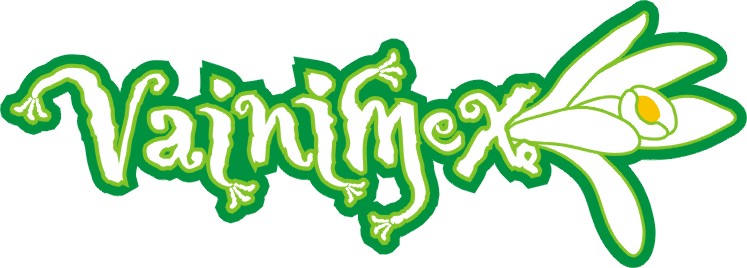Where it comes from
In the tropical reaches of PAPANTLA grows a luxuriant vine with thick leaves. Its flower - Vanilla Planifolia - is a fragile, fragrant orchid, which in turn bears a long and slender fruit : the vanilla bean. After a crucial process of curing and drying, the bean yields a subtle and unique spice. Vanilla vines are carefully planted and tended to produce fragrant orchids. The vines blossom once a year,from September to January . Since the blooms only last a day, pollination must occur with pinpoint accuracy, which means incredibly patient and skilful handwork
Vanilla originated in Mexico and for ages no other country in the world has known the secret of its magnificent flavor. First taken out of the country by the Spanish conquistadors, vanilla pods were stolen and replanted in the former Bourbon Island - the actual French Reunion Island. To this day the term "Bourbon" vanilla still applies to vanilla originating from that part of the world.
Although vanilla is now produced in Indonesia, the Comoros, Tahiti, Mexico, Tonga and more recently in parts of Africa and China,

|
THE LEYEND OF VANILLA
Vanilla originated in Mexico. When the Aztecs defeated the Totonaco Indians, inhabitants of the Eastern Coastal area of Mexico for hundreds of years, one of the most important tributes they demanded was the fruit of the "Tlilxochitl" vine, the vanilla pod. These pods were used in conjunction with cacao beans to make a drink called "Chocolatl". Hernando Cortez, in turn, conquered the Aztecs in about 1520. In his magnificent banquet hall, the emperor of the Aztecs, Montezuma, offered this delicious drink to Cortez in a golden goblet. In addition to the gold and silver and jewels that Cortez brought back with him to Spain, he also brought cacao beans and vanilla pods. The Spaniards called the pod "Vainilla", meaning "little scabbard".
The chocolate drink made from the cacao and vanilla was very popular in Europe and was at first a luxury only the nobility and very rich could afford. Some 80 years later, in 1602, Hugh Morgan, apothecary to Queen Elizabeth I, was the first European to suggest that vanilla could be used as a flavoring by itself.
Vanilla pods, or beans as they are now called, are grown in Madagascar(Bourbon Islands), Indonesia, Mexico, and Tahiti. Vanilla beans are the fruit of an orchid. Of the thousands of varieties of orchids, the vanilla plant is the only one that has an edible fruit. In Mexico, the Bourbon Islands and Indonesia, the genus is "Vanilla Planifolia" while in Tahiti it is "Vanilla Tahitensis".
Vanilla grows in areas 10 to 20 degrees north or south of the equator. It requires a warm and moist climate with a mixture of shade and sun, and grows well from sea level up to 2,000 feet.
|


